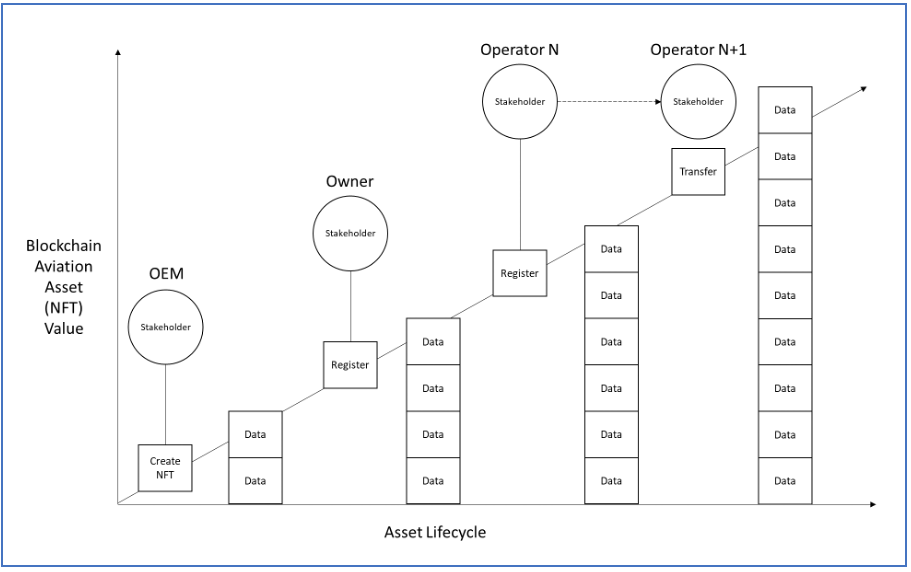Our series of Marketplace Spotlight articles focus on the partners making the Yocova platform come alive and the digital aviation solutions they provide. Here we hear from Block Aero in the third article of this series. They tell us about blockchain, and how it is making a difference in aviation.

Part 3: Monetisation of digital assets
During 2021 Blockchain technology experienced rapid growth — with the market capitalization of the top crypto-currencies (including Bitcoin and Ethereum) exceeding USD 1.5 Trillion.
This happened not just because of a wider adoption with retail investors, but because crypto assets actually began finding themselves included in the portfolios of both institutional investors and large corporates in the big tech and industrial sectors.
This shift clearly illustrates that integration between multiple layers of blockchain is critical for the evolution from a technology-focused on store of value (Cryptocurrency) and decentralized finance (DeFi), to a market that connects growing public chain liquidity with off-chain oracle feeds and hybrid, non-fungible tokens (NFT) of physical assets. In terms of economic value, this space is where we will see new sources of capital, business model innovation, and inclusive participation of digital assets.
For aerospace companies to participate in this new digital economy, will means that each asset (such as an aircraft, engine, or serialized part) will need to bind to the unique, on-chain identities which contain transferable access to the comprehensive data sets of:
- Compliance documentation
- Owner/operator history
- Back-to-birth traceability events
- Other rights and use-cases not yet discovered
The tokenization of assets with hybrid public-private chain solutions presents an opportunity for OEMs, owners, operators, and other stakeholders to invest in maintaining decentralized data profiles — accruing benefits from future owners and operators using tokenized data that can be transparently and collaboratively monetized throughout the lifecycle.
Achieving this type of asset digitization exclusively on the most popular public chains (such as the Ethereum network) is not especially practical for the aerospace industry, due to scalability and cost challenges around the volume and complexity of asset data, transactions, and confidentiality requirements.
Therefore, a better approach is to use a private, permissioned blockchain layer with rich application features (such as Block Aero), that can handle state management specific to aviation assets and transactions between peer organizations using high throughput, energy-efficient technology like Hyperledger Fabric.
Updated asset state from the private blockchain layer can then be relayed to public blockchains, or retrieved for use by network participants in internal systems as needed.
However, initially tackling MRO and leasing use-cases by using blockchain to gain operational efficiencies, will position organizations to benefit from immediate, practical applications — while simultaneously building up the long-term (and accruing) benefits of creating on-chain digital assets for aircraft, engines, and high-value rotable components.

Figure 1: Creating Value over the Asset Lifecycle with Blockchain
Find out more about Block Aero:
Visit their Storefront on Yocova and request a free trial.
Interested in finding out more about Block Aero and blockchain?
Author Block.Aero
Published 1st November 2022




